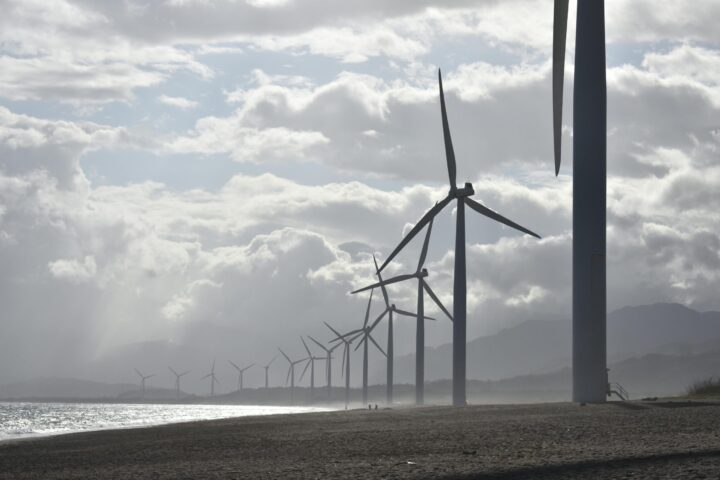The following contribution is from another author.
Have you ever wondered how you could reduce your energy bills without making major changes to your home? Many people don’t realize that small, affordable upgrades can make a big difference in energy efficiency. Whether you live in Lexington or elsewhere, improving your home’s energy use is good for your wallet and the environment. It doesn’t have to be overwhelming or expensive to get started.
In this blog, we will share practical and easy-to-implement home upgrades that can make your house more energy-efficient. These ideas are simple, effective, and perfect for homeowners who want to make a difference without major renovations.
1. Install Energy-Efficient Lighting
Switching to energy-efficient lighting is one of the easiest ways to reduce energy use. Traditional incandescent bulbs use more electricity and generate heat. In contrast, LED bulbs last longer and use significantly less energy. Start by replacing the lights in the rooms you use most often, such as the living room and kitchen.
You can also add dimmer switches to control brightness and save energy during evenings or when full lighting isn’t needed. Over time, these changes add up to noticeable savings on your electricity bill. Plus, LED bulbs are widely available and come in a variety of styles to suit your home’s décor.
2. Upgrade Your Windows
Old or drafty windows can let in cold air during the winter and hot air during the summer, making it harder to regulate your home’s temperature. Installing energy-efficient windows can keep your home comfortable year-round. This upgrade reduces energy waste and lowers heating and cooling costs.
If replacing your windows isn’t in your budget, consider adding weatherstripping or caulking to seal any gaps. For residents in the area, working with a local Lexington window company can make the process easier and stress-free. They provide quality options tailored to your home’s needs, ensuring better insulation and improved energy efficiency.
3. Close Air Leaks
Air leaks are a common cause of wasted energy in many homes. Cracks around doors, windows, and multiple openings can allow conditioned air to escape and outdoor air to enter. You can fix this by sealing leaks with caulk or weatherstripping, which is affordable and easy to apply.
Check your attic, basement, and any areas where pipes or wires enter your home. These spots are often overlooked but can contribute to significant energy loss. By sealing leaks, you can keep your home more comfortable and reduce the strain on your heating and cooling systems.
4. Add Insulation
Proper insulation is key to keeping your home energy-efficient. Without enough insulation, your home may lose heat in the winter and stay warm in the summer. Focus on areas like the attic, walls, and floors to improve your home’s thermal barrier.
Adding insulation can make a noticeable difference in your energy bills. It also makes your home more comfortable by reducing drafts and maintaining consistent temperatures. This upgrade is especially important for older homes that may not meet modern energy standards. Additionally, insulating your home can help reduce noise from outside, creating a quieter living environment. For the best results, consider consulting a professional to determine the most effective insulation type and placement for your home.
5. Install a Programmable Thermostat
A programmable thermostat is an affordable way to improve your home’s energy efficiency. It lets you put specific temperatures for different times during the day. For example, you can lower the heat when you’re at work and have it warm up before you get home.
Smart thermostats take this a step further by learning your habits and adjusting automatically. This feature not only saves energy but also makes your home more comfortable. You can even control many models from your smartphone, adding convenience to energy savings.
6. Switch to Energy-Efficient Appliances
Older appliances use more energy than modern, energy-efficient models. Consider replacing items like your refrigerator, dishwasher, and washing machine with newer versions that have an Energy Star rating. These appliances are designed to use less water and electricity while still performing well.
Upgrading appliances may seem like a big investment, but it pays off in the long run. You’ll save on energy bills and reduce your home’s environmental impact. Start with the appliances you use most often to see the biggest savings.
7. Use Ceiling Fans Smartly
Ceiling fans are a simple way to improve your home’s energy efficiency. In the summer, they help circulate cool air, allowing you to use less air conditioning. In the winter, you can reverse the fan’s direction to push warm air down from the ceiling.
Make sure to turn off ceiling fans when you leave a room, as they cool people, not spaces. Using fans strategically can reduce your energy use and keep your home comfortable year-round.
8. Plant Trees or Add Outdoor Shade
Adding shade around your home can lower cooling costs during hot months. Planting trees or installing outdoor shades reduces the amount of direct sunlight that enters your home. This natural barrier keeps your home cooler and reduces the need for air conditioning.
Choose trees or plants that grow well in your area and place them where they’ll block the most sunlight. Outdoor shades or awnings are also effective options if you want faster results. These changes can enhance your home’s appearance while improving energy efficiency.
In conclusion, making your home more energy-efficient doesn’t have to involve major renovations. Simple upgrades like installing energy-efficient lighting, sealing air leaks, and using a programmable thermostat can make a big difference. Taking these steps benefits both your budget and the environment. Start small, and you’ll see how even minor changes can lead to noticeable improvements. Your home will be more comfortable, your energy bills will go down, and you’ll contribute to a more sustainable future.
















